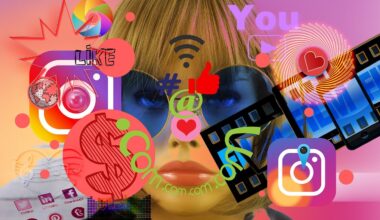Innovations in Social Media to Support Mental Health Education
Social media has emerged as a crucial platform for mental health education, advocating awareness and compassion. Numerous innovations are transforming how users connect with resources geared toward mental well-being. Integrating mental health info into platforms like Instagram and TikTok has propelled meaningful discourse. Users can access supportive communities, fostering connection amidst the chaos of everyday challenges. Consequently, it is essential for social media platforms to emphasize mental health support. For example, algorithms promoting mental health content allow users to find relevant resources easily. Mental health organizations’ collaboration with tech companies has led to increased visibility for important topics. These partnerships introduce educational campaigns that raise awareness about mental illness, stigma reduction, and available help. By providing easy access to educational resources, social media can demystify mental health issues, creating a safer online environment. Innovations also include virtual therapy options, connecting users with professionals directly through apps. Additionally, the rise of peer support groups within platforms further helps those grappling with various mental health challenges. These dynamic changes can significantly impact users’ ability to navigate emotional struggles, enhancing their overall quality of life.
Empowering Communities Through Digital Engagement
As social media evolves, the focus on mental health education creates empowerment within communities. Initiatives such as awareness campaigns and dedicated support groups facilitate conversations around mental health. By leveraging features like live video, Instagram Stories, or Facebook Events, mental health advocates can reach broader audiences. This drives engagement and communal support, encouraging individuals to openly share their stories. Moreover, innovative hashtags like #MentalHealthMatters and #BreakTheStigma have emerged, fostering powerful discussions. Users get encouraged to explore mental health topics and resources, helping reduce isolation often experienced by individuals. The strong presence of mental health influencers on platforms also plays a pivotal role in spreading awareness. Their relatability can increase the likelihood that their audience opens up about their experiences. Likewise, educational content produced by psychologists and mental health professionals attracts attention, informing users of valuable methods and techniques for coping. By prioritizing mental health on social media, platforms help normalize these conversations and educate individuals about the importance of addressing mental wellness. Integrating educational resources into the already popular platforms can create a substantial impact on users’ well-being and initiate change across various communities.
One notable innovation in social media for mental health awareness is the use of interactive content, such as quizzes and polls. These tools not only engage the audience but also serve as educational resources. For instance, a quiz assessing stress levels can guide users toward resources tailored to their specific needs. Additionally, platforms can utilize features that allow users to share results anonymously, contributing to destigmatization. Further, gamification applies well to mental health content, making it more engaging for users. Incorporating elements of gaming—such as rewards for participation in challenges or activities—can motivate users to learn more about mental health topics. Another tactic involves partner-driven initiatives worth exploring. Collaborations between prominent celebrities and mental health organizations amplify visibility of important messages. Social media platforms can promote mental health awareness by showcasing their campaigns, urging users to take action and educating them on mental health resources. Such partnerships can significantly increase credibility for organizations and projects aiming to support mental health education. This ultimately encourages a continuous dialogue within communities. Consequently, a collective effort can engender a profound shift towards prioritizing mental health on social media.
Utilizing AI for Personalized Mental Health Support
Artificial intelligence (AI) is another innovation gaining traction in supporting mental health education on social media. The power of AI lies in its ability to analyze user behavior, ensuring personalized experiences tailored to individual needs. By employing machine-learning algorithms, platforms can detect emotional patterns and guide users toward useful resources. When a user shares a post expressing distress, these algorithms may recommend specific wellness articles or coping strategies pertinent to their situation. Furthermore, AI chatbots offer immediate assistance, providing users with a safe outlet to discuss their feelings. These chatbots can deliver psycho-educational content and help users find relevant connections to communities fostering understanding. For those who prefer anonymity, particularly in their early journey towards seeking help, such tools can be invaluable. The integration of AI fosters a sense of empowerment, encouraging individuals to seek resources while ensuring they do so in a secure environment. Ultimately, harnessing AI serves the dual purpose of tailoring support systems for users and enhancing the overall mental health discourse in digital spaces.
In addition to AI and interactive content, mental health awareness on social media benefits from the introduction of multimedia educational content. Videos, infographics, and curated articles present valuable information in engaging formats. Social media platforms, such as TikTok, enable users to share quick tips and profound narratives that may resonate with vulnerable individuals. Platforms can sponsor content classes focused on creating educational video content aimed at raising awareness for mental health issues. As accessibility increases, users can absorb this bite-sized information with ease, promoting better understanding and retention. Users are more likely to share compelling multimedia messages with their social networks, increasing reach exponentially. Moreover, social media collaborations with artists ensure creativity merges with education. Artistic representations compel audiences to reflect on their mental health journey and foster a deeper connection to the message being shared. Implementing these immersive methods of promoting mental health helps break barriers and invites positive engagement with mentally healthy practices. Mental health awareness campaigns can gather momentum, leading to a more compassionate society dedicated to understanding and supporting mental health challenges.
Addressing Young Audiences with Engaging Content
Social media’s ability to reach young audiences facilitates innovative mental health education tailored to their preferences. Utilizing platforms frequented by younger generations, such as Snapchat and TikTok, enables organizations to design content appealing to this demographic. They can create short, impactful videos that resonate with the experiences of youth today. By incorporating relatable language and relevant contexts, campaigns can effectively inspire conversations among users. Engaging stakeholders in these campaigns—like influencers or artists—provides authenticity and relatability for audiences. Collaborating with young content creators amplifies messaging and encourages individuals to share their stories and struggles. This approach empowers youth to embrace vulnerability, knowing they are not alone in their experiences. Furthermore, leveraging trends like viral challenges can further promote mental health awareness. Campaigns that encourage users to express their feelings, coping mechanics, or success stories can garner widespread participation. Overall, addressing young audiences allows mental health initiatives to leverage social media’s wide reach while nurturing supportive online environments. By fostering connections and encouraging self-expression, social media can positively influence young individuals’ mental health journeys.
Finally, one critical area for innovation revolves around monitoring the impact of social media on mental health education. Researchers and organizations are increasingly focusing on understanding how engagement with mental health content influences users. By analyzing data, experts can gain insights into how specific posts or campaigns resonate with audiences. This evaluation process could help shape future initiatives, making them more effective in promoting mental health topics. Monitoring trends can help identify what types of content users find most compelling and beneficial. Additionally, incorporating feedback mechanisms allows users to provide their opinions about educational material they encounter. Reassessing educational strategies based on user experiences ensures they remain relevant and engaging over time. Social media companies are tasked with responsibility for creating healthier content consumption environments by continuously evolving their approach to mental health education. These innovations must mirror current understandings surrounding mental health issues. The combination of research-driven insights and community feedback leads to more profound outcomes, enhancing how platforms address mental health education and creating dedicated, lasting impact in society.
This is another paragraph with exactly 190 words…


